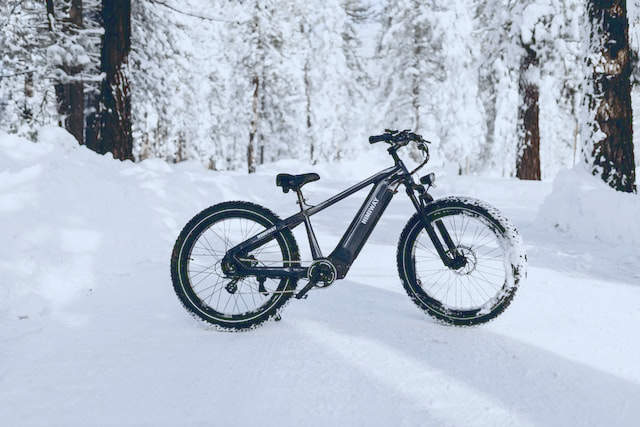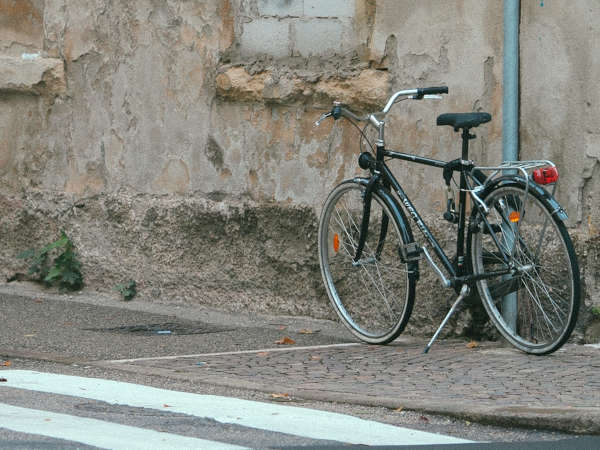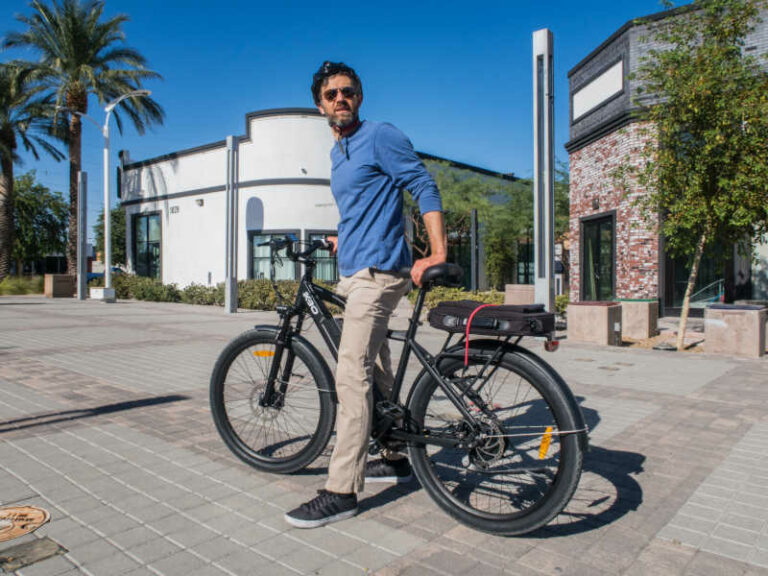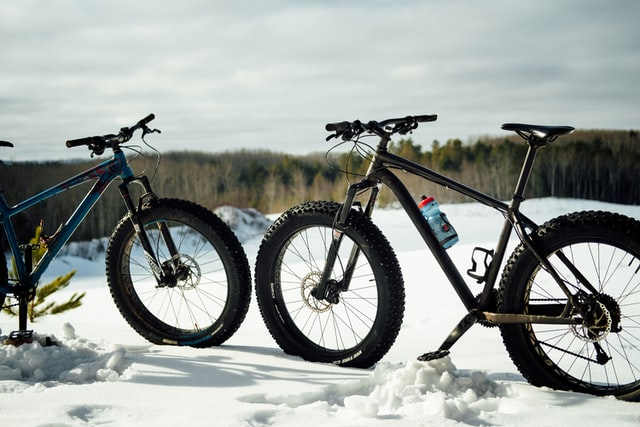Can You Ride a Fat Tire eBike in the Winter?
What are fat tire eBikes and how do they work?
You may have seen them on the trails or even on the road – eBikes with extra-wide tires that look like they’re made for off-roading. These are called fat tire eBikes, and they’re becoming increasingly popular with cyclists of all levels. So, what are fat tire eBikes and how do they work?
As the name suggests, fat tire eBikes have wider tires than traditional eBikes. This gives them better traction and stability, making them ideal for riding on rough terrain. Most fat tire eBikes also have powerful electric motors that provide assistance when riding uphill or into a headwind. In addition, many fat tire eBikes come equipped with features like suspension and hydraulic brakes that further improve their performance.
So if you’re looking for an eBike that can take your riding to the next level, a fat tire eBike might be just what you’re looking for, especially in the winter.
How well do they perform in the winter weather conditions?
How cold is too cold for an eBike?
Most eBikes will continue to work in temperatures down to around freezing, but battery life will be shorter in the cold and you may find the motor less responsive. If you’re riding in very cold weather, it’s worth investing in a good some winter riding gear and making sure your batteries are well insulated. It also can’t hurt to pick up a second battery just in case…
Are skinnier or wider tires better for snow?
Skinnier tires can make it more difficult to pedal through deep snow and do not give as much traction on ice as wider ones. Wider tires will float better on top of the snow, but you may find yourself sinking down into very soft deep powder. Fat tires have more surface area in contact with the ground so they tend to work better on packed snow and ice than skinny tires.
Studded tires
Studded tires can provide extra traction on icy or packed snowy surfaces, but they’re not suitable for all conditions. If you’re riding in deep snow, studded tires can actually make it more difficult to pedal since they make the tire heavier and provide little benefit in deeper snow. They also tend to be quite expensive, so it’s worth doing some research to see if they’re right for you. Studded tires are a good option if you’ll be riding in packed snowy conditions regularly or commuting on icy surfaces.
Are Fat Tire eBikes suitable for all types of terrain or just specific terrains/conditions?
One of the great things about fat tire eBikes is that they are built for all types of terrain. Whether you’re riding on pavement, dirt trails, or even snow, fat tires provide superior traction and stability. That said, there are some conditions where fat tires may not be the best choice. For instance, on very smooth surfaces like paved roads, the extra width of the tires can make pedaling more difficult than bikes with regular width tires. In addition, deep sand or mud can be challenging for even the most well-built fat tire bike. So while fat tires are suitable for a wide range of conditions, they may not be ideal for every situation. They are however better for most winter type conditions than other narrow tire bikes.
What are some of the pros and cons of riding a fat tire eBike in the winter months?
One pro to riding a fat tire eBike in the winter is you get to enjoy all the cold weather benefits of a fat tire bike without having to do all the extra work. Fat tire bikes are generally more work to ride, even in the summer. Combined with snow and ice and other unfavorable winter conditions like wind, riding in the winter can already be quite challenging on any bike. Having the assistance of an electric powered fat tire bike allows you to take advantage of the extra traction and stability without having to be Lance Armstrong to pedal through winter conditions.
Since fat tire eBikes use a battery, and batteries lose power when they get cold, eBikes can run into some power issues in very cold weather. You may want to consider a second backup battery if you are going to be riding in extreme cold weather. Fat tire eBikes also have electronics which can also be adversely affected by cold. Before you buy, ask what the electronics (and the batteries) are rated for in terms of cold temperature usage.
How can you make sure your ride is as safe as possible when cycling in the cold weather conditions?
As the weather gets colder, it’s important to take some extra precautions to make sure your cycling ride is as safe as possible. One thing you can do is dress in layers to stay warm. It’s also a good idea to wear bright clothing so you’re more visible to drivers. You might also want to invest in some cold weather gear for your bike, like fenders and a front light. And when it comes to choosing a route, stick to well-lit streets with minimal traffic. If riding off road be sure not to ride alone. By taking these simple steps, you can help ensure a safe and enjoyable ride all winter long.
Bottom Line…
Riding a fat tire eBike in the winter can be a fun and enjoyable experience and allow you to go further and faster than a regular bike. They can be suitable for most terrain, however they may not be ideal for every situation. To ensure a safe ride in cold weather, it is important to dress in layers and wear bright clothing that is visible to drivers. Additionally, consider investing in cold weather gear for your bike and choose routes that are well-lit and have minimal traffic. With the right precautions and preparation, fat tire eBikes can be a great choice for winter cycling.






